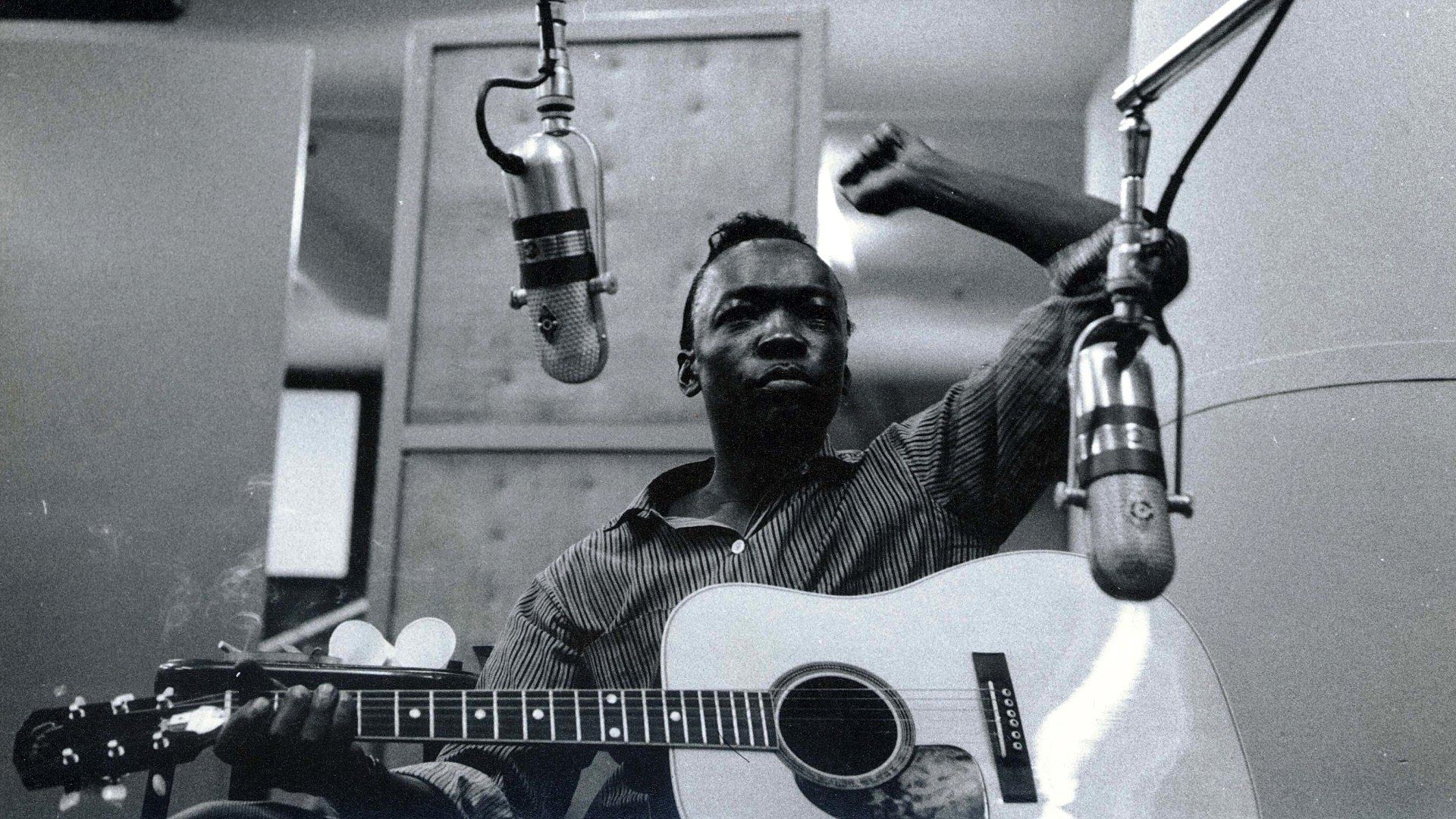The 10 best songs by John Lee Hooker of all time

John Lee Hooker (1917-2001) was an influential American blues singer, songwriter and guitarist. Hooker was born in Mississippi and his distinctive style combined elements of Delta blues, boogie woogie and electric blues. His deep, raspy voice and rhythmic guitar playing made him a key figure in the development of blues and rock music.
Hooker’s career spanned several decades, beginning with his early recordings in the 1940s. He rose to prominence in the 1950s with hits such as “Boogie Chillen” and “Crawlin’ King Snake,” which showcased his raspy vocals and hypnotic guitar rhythms. Throughout the 1960s and beyond, Hooker continued to release influential albums and collaborate with a variety of musicians, including rock artists such as Canned Heat and Santana.
The music of John Lee Hooker has left a lasting legacy and influenced generations of blues and rock musicians. His ability to create stirring rhythms and convey deep emotions through his music earned him recognition as one of the greatest blues artists of all time.
1. Chill Out (Things are going to change)
“Chill Out (Things Gonna Change)” is a song by John Lee Hooker, featured on his 1995 album *Chill Out*. The song embodies Hooker’s unique blend of blues and boogie-woogie with a contemporary twist. It features a relaxed groove, Hooker’s deep, raspy voice, and his signature guitar playing style.
Lyrically, “Chill Out (Things Gonna Change)” tackles themes of resilience and hope in the face of adversity. It encourages listeners to remain calm and patient, knowing that things will eventually get better. The song’s laid-back vibe and Hooker’s confident delivery make it a standout track on the album, showcasing his enduring talent and ability to connect with audiences through his music.
2. Dimples
“Dimples” is a classic blues song by John Lee Hooker, originally released in 1956. It is characterized by its infectious guitar riff and Hooker’s distinctive vocal style, which combines storytelling with rhythmic singing. The song’s lyrics humorously describe a woman’s physical features, particularly her dimples, and Hooker’s fascination with her charm.
“Dimples” has been covered by numerous artists over the years, reflecting its enduring popularity and influence in blues and rock music. The song’s fast tempo and Hooker’s energetic performance style make it a favorite among fans of his work and highlight his ability to create catchy, memorable tunes that capture the spirit of the blues.
3. Blues before sunrise
“Blues Before Sunrise” is a classic blues song originally recorded by John Lee Hooker, an influential blues musician known for his distinctive guitar playing and deep, gravelly voice. The song was first released on his 1960 album “Travelin'”.
“Blues Before Sunrise” is characterized by its slow tempo, melancholy melody and soulful lyrics that convey themes of heartbreak and longing. Hooker’s soulful vocals and bluesy-tinged guitar playing create a haunting and evocative atmosphere, capturing the essence of traditional blues music.
The song has been covered by various artists over the years, reflecting its enduring appeal and importance within the blues genre. “Blues Before Sunrise” remains a testament to John Lee Hooker’s musical legacy and his ability to convey deep emotion through his raw and authentic blues style.
4. Crawling Kingsnake
“Crawling King Snake” is a blues song that has been covered by various artists over the years, including John Lee Hooker. It was originally written and recorded by blues musician Tony Hollins in 1941. John Lee Hooker’s rendition, released in 1949, is particularly notable and became one of his signature songs.
The song features a hypnotic, crawling rhythm and Hooker’s deep, raspy vocals. Lyrically, “Crawling King Snake” describes the movements of a snake and compares them to the singer’s intentions and desires. It is a classic example of Hooker’s ability to create a moody and atmospheric blues experience, with his guitar playing and vocals evoking a sense of longing and sensuality.
Over the years, “Crawling King Snake” has been covered by numerous blues and rock artists, reflecting its enduring popularity and influence within the blues genre. John Lee Hooker’s version in particular remains a cornerstone of his discography and a testament to his unique contribution to the blues.
5. I’m in the mood
“I’m in the Mood” is a classic blues song recorded by John Lee Hooker in 1951. It is known for its relaxed, sultry groove and Hooker’s deep, soulful vocals. The song features a simple but infectious rhythm, carried by Hooker’s rhythmic guitar playing and supported by minimal instrumentation.
Lyrically, “I’m in the Mood” deals with themes of love, desire and romance. Hooker’s expressive delivery and raw, emotive style capture the essence of the blues, conveying a sense of longing and sensuality. The song’s repetitive structure and hypnotic melody add to its timeless appeal, making it a favorite among fans of traditional blues music.
“I’m in the Mood” is one of John Lee Hooker’s most popular and enduring songs, showcasing his ability to evoke deep emotions through his music and cementing his reputation as a legendary figure in the blues genre.
6. Boom Boom
“Boom Boom” is a blues song by John Lee Hooker, originally recorded in 1961. It is one of his most famous and well-known tracks, known for its infectious rhythm, hypnotic guitar riff and distinctive vocal style.
Lyrically, “Boom Boom” features a call-and-response structure, with Hooker’s deep, gravelly voice driving the narrative. The song’s lyrics revolve around themes of desire, attraction and romantic pursuit, delivered with Hooker’s signature swagger and charm.
Musically, “Boom Boom” showcases Hooker’s mastery of the blues genre, combining elements of rhythm and blues with his unique guitar technique and vocals. The song’s energetic groove and catchy melody have made it a classic of blues music and a favorite among fans and musicians alike.
“Boom Boom” has been covered and interpreted by various artists over the years, cementing its status as a classic blues standard and testifying to John Lee Hooker’s continuing influence on the genre.
7. Boogie Chill’
“Boogie Chillen'” is a groundbreaking blues song by John Lee Hooker, released in 1948. It is considered one of Hooker’s best known songs and a milestone in the development of electric blues. The song is characterized by Hooker’s rough, rhythmic guitar playing and his powerful, raspy vocals.
Lyrically, “Boogie Chillen'” is a simple yet hypnotic tale of a young man’s desire to boogie dance and have fun. The repetitive guitar riff and Hooker’s rhythmic vocals create an irresistible groove that became the blueprint for countless blues and rock songs to follow.
“Boogie Chillen'” was a huge hit for Hooker and established him as a prominent figure in the blues scene. Its influence can still be heard in contemporary blues and rock music today, making it a timeless classic in American music history.
8. I don’t want your money
“I Don’t Want Your Money” is a blues song by John Lee Hooker, originally recorded in 1956. The song features Hooker’s typical rough vocals and minimalist guitar style, characteristic of his early recordings.
Lyrically, “I Don’t Want Your Money” expresses independence and self-reliance. Hooker’s lyrics express a rejection of materialism and a desire for personal freedom, reflecting themes common in blues music, which emphasizes emotional depth and personal expression.
Musically, the song is carried by a steady rhythm and Hooker’s rhythmic guitar playing, creating a simple yet captivating groove. His vocals, delivered with a deep, soulful resonance, add to the emotional impact and authenticity of the song.
“I Don’t Want Your Money” is a testament to John Lee Hooker’s ability to convey deep emotion through his music and lyrics, and reflects his lasting influence on the blues genre and his status as a legendary figure in American music history.
9. A bourbon, a scotch, a beer
“One Bourbon, One Scotch, One Beer” is a blues song originally written by Rudy Toombs and popularized by John Lee Hooker in 1966. It is a narrative blues number that tells the story of a man who drinks his problems away after a series of unfortunate events. The song’s repetitive structure and Hooker’s soulful delivery emphasize the protagonist’s suffering and his humorous attempts to drown them in alcohol.
John Lee Hooker’s version of “One Bourbon, One Scotch, One Beer” became a hit and remains one of his best known songs to this day. Its catchy rhythm and lyrics have made it a favorite among blues fans and inspired numerous cover versions by artists from various genres. The song’s enduring popularity underscores its status as a classic in blues music history.
10. Play with the hook
Messin’ with the Hook is an album by blues guitarist and singer John Lee Hooker, released in 1970. It showcases Hooker’s distinctive blues style, characterized by his raspy vocals and hypnotic guitar playing. The album includes tracks such as “Messin’ with the Hook,” “The Motor City Is Burning,” and “I Got My Eyes on You,” which showcase Hooker’s ability to create intense and soulful blues compositions.
Messin’ with the Hook captures the essence of Hooker’s raw and emotional approach to blues music and underscores his influence on subsequent generations of blues and rock musicians. The album’s tracks feature deep grooves, powerful lyrics and Hooker’s signature improvisational style, making it a significant entry in his discography.


Edward Tomlin is a regular contributor to Singers Room. Since 2005, Singersroom has been the voice of R&B around the world. Connect with us on social media below.



